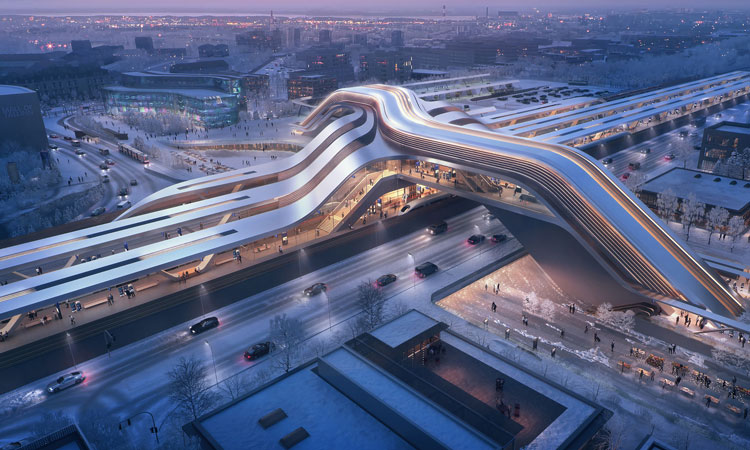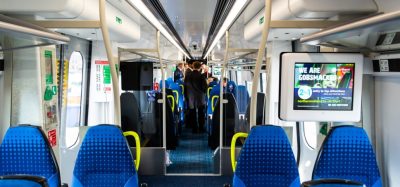Rail Baltica: Capturing the greenfield and transforming mobility
Posted: 6 November 2020 | Kaspars Briškens | No comments yet
Kaspars Briškens, Head of Strategy and Development at the Rail Baltica joint venture, RB Rail AS, explores some of the long-term benefits that the Rail Baltica project must achieve with the help of innovation, digitalisation and sustainable greenfield infrastructure development.


After forever transforming mobility with his Model T, Henry Ford is believed to have said: “If I had asked people what they wanted, they would have said faster horses.” Innovation is often misunderstood, resisted and underappreciated, especially in an industry notorious for its inherent conservativism. While the automotive, aviation and telecom industries, to name a few, are at the avant-garde of the Fourth Industrial Revolution and its signature digital transformation, rail is anything but a trailblazer. There are, nevertheless, promising signs, as leading railway infrastructure managers, operators and manufacturers are actively embracing the ongoing process of creative destruction – to borrow Joseph Schumpeter’s term – via industry-leading innovation initiatives and concepts, such as Smartrail 4.0, EULYNX, Digital Freight Train and Mobility-as-a-Service (MaaS), further supported by leading public-private partnerships and technology platforms, such as Shift2Rail and ALICE.
While innovation in established environments is often impeded by tradition, legacy interfaces and obsolescent technologies, there are no such barriers in a greenfield environment. Rail Baltica is, therefore, a unique opportunity to deploy innovative solutions in delivering infrastructure for the digital native generation. In order to capture this opportunity, we have developed a comprehensive innovation and digitalisation programme which will significantly contribute to three key long‑term objectives of Rail Baltica: Sustainability and operational viability, solid business case and a well‑functioning market, as well as maximised and widely distributed socio-economic benefits. As an emerging mobility and logistics ecosystem connected by an entirely greenfield UIC-gauge, double-track, 25kV AC electrified, ERTMS‑equipped, mixed-traffic railway line, Rail Baltica has the potential to form the physical core of a new North-East European economic corridor, with sustainability and digitalisation at its heart. Optimised BIM-based designs, open and modular equipment, upgradeable and scalable components, world-class digital architecture and distributed sensing technologies will contribute towards efficient future asset management.
Trackside and onboard sensing solutions – such as fibre-based distributed acoustic sensing; industrial IoT-based sensors; weigh-in-motion sensing, as well as video, RFID and more (installed alongside typical rail systems) – may enable smart, condition-based maintenance (and lower operational costs), as well as wear-based access charging. Using existing standards and designs wherever possible, avoiding rail-specific and single-vendor ones, should also help promote the integration of Rail Baltica with other modes and nodes in the wider transport and logistics ecosystem.
Of equal importance, Rail Baltica must aim to minimise its environmental footprint, both during the operational phase – for example, by using and promoting renewable energy sources, as well as during construction – not least by promoting ‘Dig Once’ synergies via co-synchronised deployment of other types of infrastructure along the Rail Baltica corridor (transport/multimodal, 5G/fibre, energy, regional/industrial, defence).
Finally, Rail Baltica must not be everyone’s guinea pig, but should aim to consider and adopt leading-edge solutions with a high technological readiness level (TRL7+), including game changers like FRMCS (Future Railway Mobile Communication System), ATO (Automatic Train Operation) or digital automatic coupling (DAC), as well as previously orphaned solutions – on standby due to prior lack of appropriate enabling technology – for example, in container transhipment or intermodal freight wagon design.
Innovation can also play a crucial role in consolidating the Rail Baltica business case and commercial opportunities. Being just one component in the wider mobility and logistics value chain, Rail Baltica must achieve multimodal integration not only physically, but also functionally. Rail Baltica will connect many hotspots – urban and regional transportation hubs, intermodal terminals and industrial zones, airports and seaports – creating a cohesive web of seamless multimodal connectivity for passengers and freight. Its business case is, therefore, intrinsically linked to the competitiveness of the overall value chain.
For example, air-rail passenger intermodality, with integrated baggage handling and airlinerail operator codeshare solutions, are not a novelty. Their commercial viability, however, is often hampered by insufficient integration between the two industries. Drawing on the success of the collaborative data management (CDM) in the aviation industry – supporting real-time collaboration between airlines, airports, air traffic management services, ground handling companies and government services (such as border control, customs and security) – rail would greatly benefit from a similar data platform which, in turn, may evolve to cover also intermodal data management. As a greenfield, Rail Baltica is yet again the perfect opportunity to test such an approach.
Furthermore, air-rail passenger baggage handling may open synergies with e-commerce shipments, by jointly using a Mercitalia-type rolling cage solution onboard a high-speed trainset with tracking and status monitoring sensors enabled. In addition, first- and last-mile integration with autonomous vehicle and parcel robot systems would further strengthen the business case of such services, with subsequent adaptations also for passenger ferry, postal and ‘less than wagonload’ freight services.
In order to consolidate the commercial attractiveness of rail intermodal freight – in a region where it is currently almost non-existent – development of smart automated terminals, whole-value-chain digitalisation, innovative wagons with extended capabilities (building on the work of Shift2Rail, TIS, FERRMED and others), remote shunting for smaller/regional terminals, first- and last-mile optimisation (including via autonomous road vehicles and UAVs), and data integration with 1,520mm infrastructure are some of the key prerequisites. The commercialisation of the Rail Baltica cross-border corridor is a further avenue of future business development – for example, in dark fibre allocation for use by telecom operators, as well as a variety of services for railway undertakings and large customers.
As many great projects – such as the Channel Tunnel, Öresund Fixed Link or national high‑speed rail programmes across the world – have demonstrated, the true extent of the socio‑economic impact of transformational megaprojects is impossible to predict. It is, however, clear that innovation – not an end in itself – can help promote many long-term benefits and, importantly, ensure their broader and more equal distribution. Enabling seamless and multimodally‑synchronised passenger mobility; creating a more efficient freight value chain with rail at its core; promoting sustainability and minimising impact, accelerating 5G development, including for rural connectivity; promoting regional industrial development via mini-terminals; developing a collaborative innovation platform with small and medium enterprises (SMEs), start-ups, universities and industrial partners; nurturing smart cities; making mobility accessible to all – these are some of the benefits Rail Baltica must achieve with the help of innovation, digitalisation and sustainable greenfield infrastructure development.
Michelangelo once said: “The greatest danger for most of us is not that our aim is too high and we miss it, but that it is too low and we reach it.” Øresundsbron transformed an entire region, HS2 aims to rebalance a whole country, the Channel Tunnel connected a fragmented continent – Rail Baltica should aim for no less.


Issue
Related topics
Building Information Modelling (BIM), Cargo, Freight & Heavy-Haul, Digitalisation, Infrastructure Developments, Sustainability/Decarbonisation







